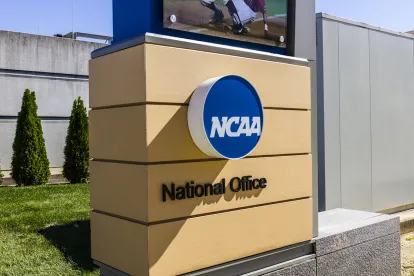Are Division I athletes who play football and basketball “student-athletes” or “employees”? The National Labor Relations Board’s General Counsel (GC) has filed a complaint against the NCAA, the PAC-12, and the University of Southern California (USC) alleging that these athletes (both scholarship and non-scholarship) are employees. The GC further contends that the organizations have intentionally misclassified these athletes as “non-employee student athletes” for the purpose of depriving them of their right to union representation to discourage them from exercising their right to engage in concerted activity, e.g., for the purpose of speaking out to improve their working conditions. The complaint sets a trial date of November 7, 2023.
In 2015, football players at Northwestern University alleged that they were employees and sought to be represented by a labor union. Without deciding the “employee” question, the National Labor Relations Board (NLRB) decided not to assert jurisdiction in the case. Since then, the NLRB decided in a 2016 case involving Columbia University that both graduate and undergraduate students could be both students and employees. After a failed effort to overturn that decision in 2021, colleges and universities have seen an avalanche of union activity among students. This precedent and a 2021 concurring opinion by Justice Kavanaugh have laid the groundwork for the GC’s complaint against USC.
Justice Kavanaugh’s 2021 concurring opinion in an antitrust case brought by athletes against the NCAA jump-started the effort to classify college and university athletes as employees. In that opinion, he invites a challenge to limitations on undergraduate athletic scholarships and other compensation related to academic performance. Although made in the context of an antitrust case, he uses language that overlaps with employee status.
“Those remaining compensation rules generally restrict student-athletes from receiving compensation or benefits from their colleges for playing sports.”
“I add this concurring opinion to underscore that the NCAA’s remaining compensation rules also raise serious questions under the antitrust laws.”
“The bottom line is that the NCAA and its member colleges are suppressing the pay of student athletes who collectively generate billions of dollars in revenues for colleges every year. Those enormous sums of money flow to seemingly everyone except the student athletes. . . . . But the student athletes who generate the revenues, many of whom are African American and from lower-income backgrounds, end up with little or nothing.”
Just months later, a District Court Judge cited Justice Kavanaugh in refusing to dismiss a case in which Division I athletes alleged that they are employees under the Fair Labor Standards Act, i.e., that they are due at least a minimum wage. The Third Circuit Court of Appeals heard argument on that case on February 15, 2023, and could issue an opinion at any time.
The issue is also before the U.S. Equal Employment Opportunity Commission (EEOC). In late 2022, the U.S. Department of Education Office of Civil Rights referred a discrimination complaint filed by the National College Players Association against NCAA Division I schools to the EEOC. The complaint alleges that NCAA Division I schools are violating Black students’ civil rights by colluding to cap compensation. In a letter sent to NCAA schools, the Department of Education Office of Civil Rights, where the complaint was initially filed, said that the issue did not fall under its jurisdiction since it involves allegations of employment discrimination.
The question of whether Division I athletes are employees is being considered under multiple laws (NLRA, FLSA and Title VII) and the issue is developing very quickly. It is critical for colleges and universities to be aware of the issue, understand its implications for their institution and track developments.



 />i
/>i

